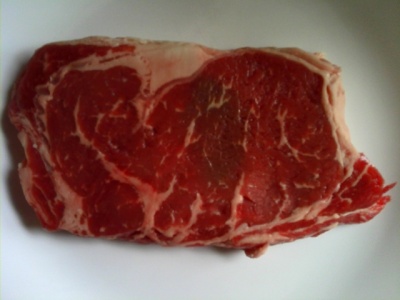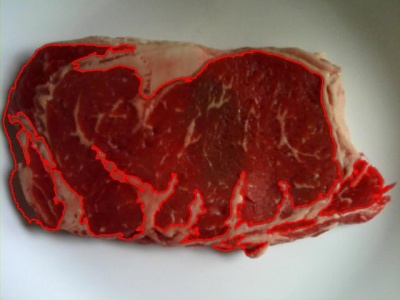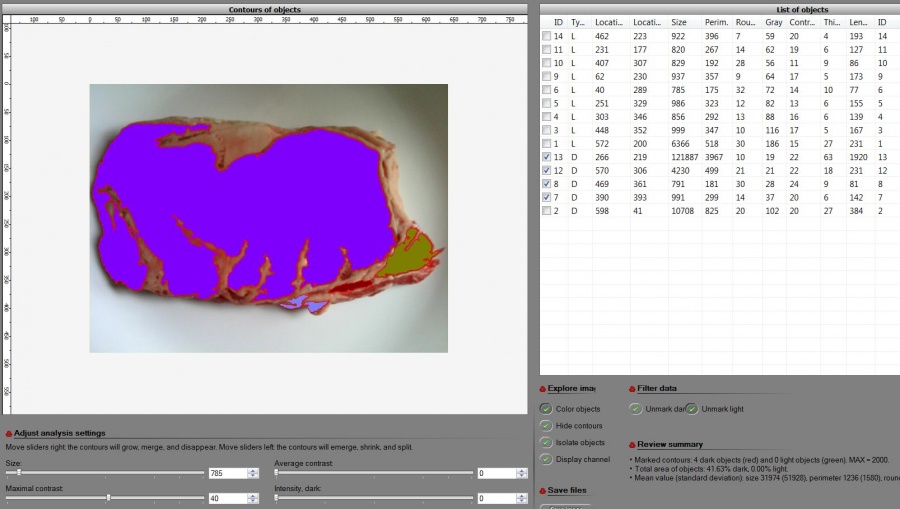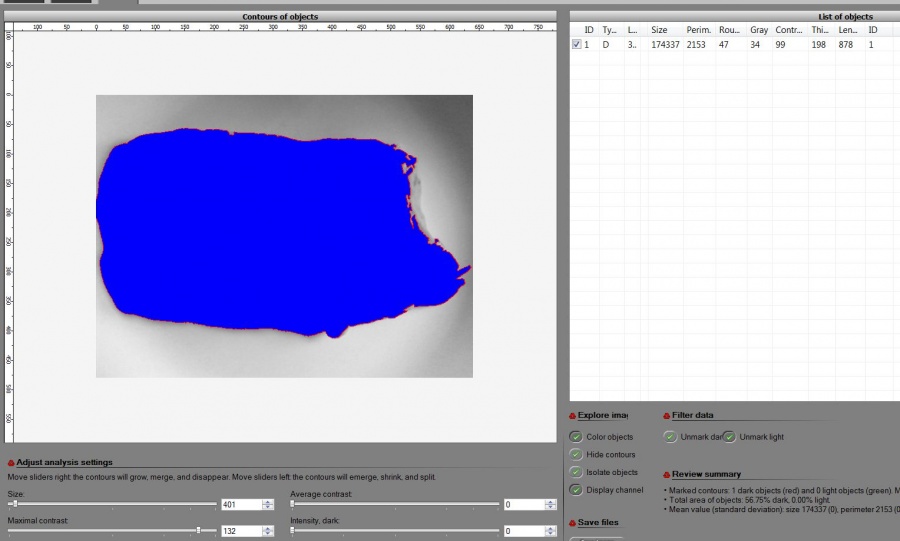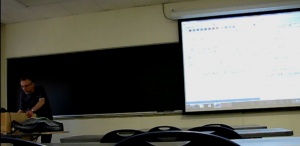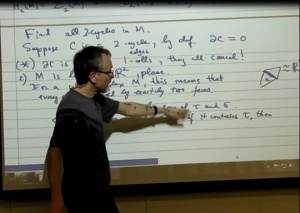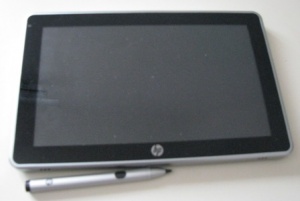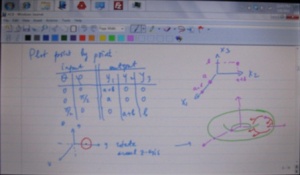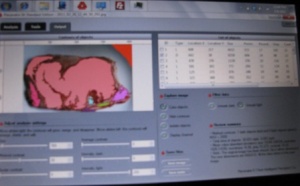Evaluating ratio meat/fat: an image analysis example
We would like to compute how lean is a piece of meat based entirely on the photograph. Practically, this task should be done with a hand-held device. HP Slate was used with Pixcavator installed.
A similar analysis was done before, with images copied from the internet. This time the images are taken by myself with the tablet’s camera. I bought the meat too myself at the local Kroger:
“PVT selection angus choice boneless beef ribeye steak”, 0.56 lb, $5.59.
Finding the right settings took just a few seconds. I only had to move one slider, the contrast.
The amount of meat is captured by the red contours above. The screenshot is below.
As you can see in the right bottom, (the area of) the meat is about 42% of the whole image.
Now we need to capture the fat. It’s tempting to try to do it directly but capturing light area with white background is never a good idea. It’s much easier to get the whole thing and then do some math.
The total of the whole steak (meat and fat) is about 57% of the total image.
Hence, the amount of fat is (57-42)/57, or about 26%. Not lean!
Other image analysis examples
Digital discoveries
- Casinos Not On Gamstop
- Non Gamstop Casinos
- Casino Not On Gamstop
- Casino Not On Gamstop
- Non Gamstop Casinos UK
- Casino Sites Not On Gamstop
- Siti Non Aams
- Casino Online Non Aams
- Non Gamstop Casinos UK
- UK Casino Not On Gamstop
- Non Gamstop Casino UK
- UK Casinos Not On Gamstop
- UK Casino Not On Gamstop
- Non Gamstop Casino UK
- Non Gamstop Casinos
- Non Gamstop Casino Sites UK
- Best Non Gamstop Casinos
- Casino Sites Not On Gamstop
- Casino En Ligne Fiable
- UK Online Casinos Not On Gamstop
- Online Betting Sites UK
- Meilleur Site Casino En Ligne
- Migliori Casino Non Aams
- Best Non Gamstop Casino
- Crypto Casinos
- Meilleur Site Casino En Ligne Belgique


